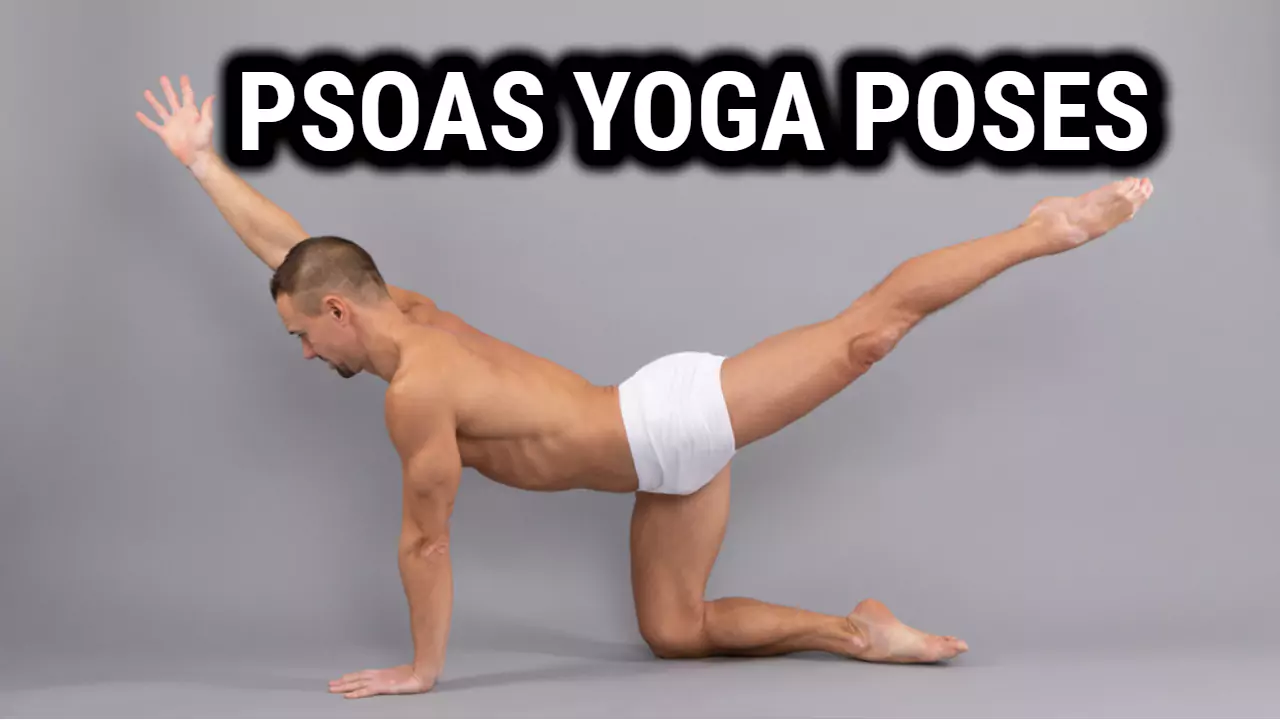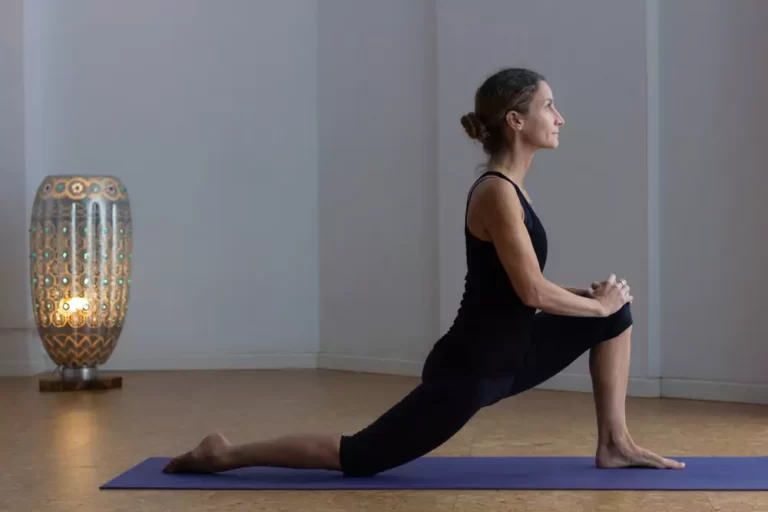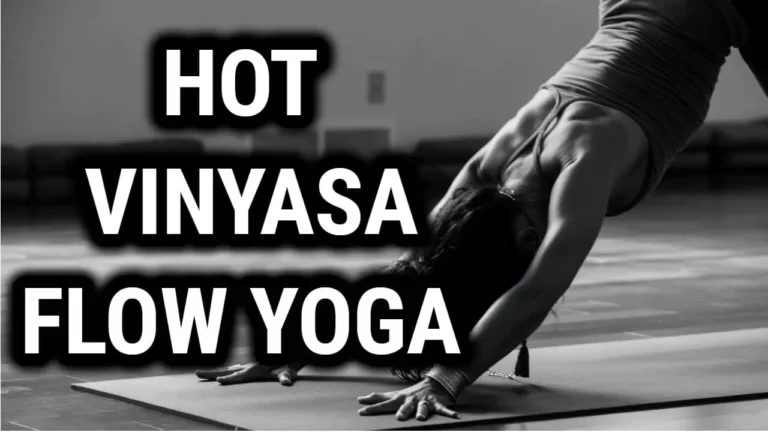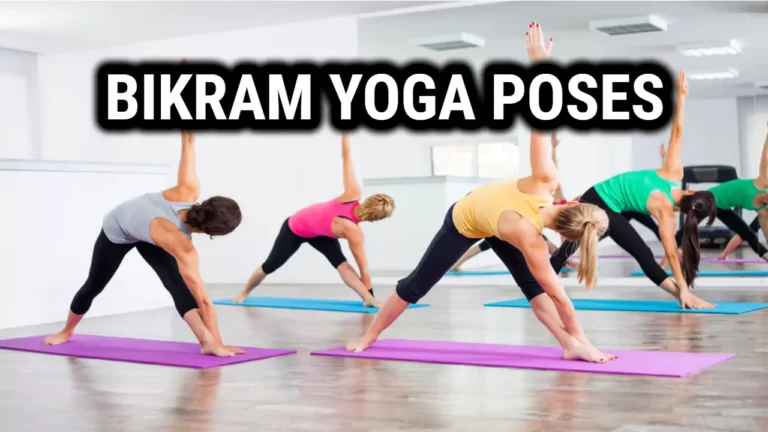Psoas Yoga Poses: Strengthen and Stretch Your Hip Flexors

If you’re looking to improve your posture, flexibility, and overall well-being, practicing Psoas yoga poses could be just what you need. The Psoas muscle is one of the most important muscles in the body, responsible for connecting the legs to the spine and providing support for the lower back. When this muscle is tight or weak, it can cause a host of problems, including lower back pain, hip pain, and poor posture.
Fortunately, there are several yoga poses that can help release and strengthen the Psoas muscle. These poses involve stretching and strengthening the muscles in the hips, thighs, and lower back, which can help alleviate pain and improve overall flexibility. Whether you’re a beginner or an experienced yogi, incorporating Psoas yoga poses into your practice can help you feel more balanced and centered.
In this article, we’ll explore some of the best Psoas yoga poses for releasing tension and strengthening this important muscle. We’ll provide step-by-step instructions for each pose, along with modifications for beginners and tips for getting the most out of each pose. By the end of this article, you’ll have a better understanding of how Psoas yoga poses can benefit your body and mind, and you’ll be ready to incorporate these poses into your daily practice.
Why is the Psoas Important?
The psoas muscle is a deep-seated muscle that connects the lumbar spine to the femur. It is one of the most important muscles in the body and is responsible for many movements, including walking, running, and sitting. The psoas is also an essential muscle in yoga practice, and it plays an important role in every asana.
One of the main functions of the psoas muscle is to stabilize the spine. When the psoas is weak or tight, it can cause lower back pain and poor posture. By strengthening and stretching the psoas muscle, you can improve your posture and reduce the risk of lower back pain.
The psoas muscle is also closely linked to the diaphragm, which is responsible for breathing. When the psoas is tight, it can restrict the movement of the diaphragm, leading to shallow breathing. By releasing the psoas muscle, you can improve your breathing and increase your lung capacity.
Common Psoas Issues
The psoas muscle is an important muscle that runs from the lower spine down to the thigh bone. It is responsible for flexing the hip joint and stabilizing the lower back. However, it can also be a source of pain and discomfort if it becomes tight or strained. Here are some common issues associated with the psoas muscle:
- Lower back pain: A tight psoas muscle can pull the lower spine forward, leading to lower back pain and discomfort.
- Hip pain: The psoas muscle can also cause pain in the hip joint, making it difficult to move the leg or stand for long periods of time.
- Postural problems: A tight psoas muscle can cause postural problems, such as a forward tilt of the pelvis, which can lead to a host of other issues.
- Difficulty breathing: The psoas muscle is connected to the diaphragm, so if it is tight, it can restrict breathing and cause shortness of breath.
If you experience any of these issues, incorporating psoas-releasing yoga poses and stretches into your practice can be helpful. Remember to listen to your body and never push yourself beyond your limits.
Preparation For Poses
Before attempting any psoas yoga poses, it’s important to properly warm up and activate the psoas muscle. This can be done by:
- Engaging in light stretching techniques for the lower body
- Doing a few warm-up poses that focus on hip flexion and extension
- Incorporating yoga breathing into your practice
- Performing yoga sequences that target the core and back muscles
Warming up before doing any physical activity is essential to reduce the risk of injury. Stretching helps increase flexibility and range of motion, while also loosening tightness in muscles. Specific stretches that help activate the psoas muscle include hip flexors, side lunge stretches, and standing hamstring stretches. These are great ways to get the body ready for more intense poses.
It’s also important to incorporate some form of yoga breathing into your practice. Whether it’s a short meditation session or just focusing on deep inhalations and exhalations, this type of mindful movement helps bring awareness to your body and mind. Not only does it help clear the mind but it also allows you to deepen your connection with your breath and body so you can move through poses with more ease.
By combining light stretching techniques, warm-up poses that focus on hip flexion and extension, mindful breathing practices, and yoga sequences targeting core strength, you will be well prepared for any psoas yoga poses. This combination of preparation will not only help avoid potential injuries but will also allow you to get the most out of your practice by creating a deeper connection between mind, body, spirit – ultimately leading towards greater overall health benefits.
Common Psoas Yoga Poses
Psoas yoga poses offer myriad benefits. From helping to relieve tightness and soreness in the muscles to improving flexibility and mobility, there is something for everyone. Here are some of the most popular postures in psoas yoga:
Crescent Lunge is a powerful pose that strengthens the core while opening up the hips. It’s a great way to prepare for more intense poses, such as lizard pose. In this posture, you come into a low lunge with your back knee on the ground, and then lift your arms overhead for an added challenge.
Bridge Pose is another great move that can be used to stretch out tight hip flexors while strengthening the core and glutes. To do this pose, you will lie on your back with your feet flat on the floor and knees bent. Then you will press into your feet and lift your hips off of the ground until they form a bridge shape.
Half pigeon is an excellent way to open up tight hips while keeping good alignment in the spine. To do this pose, start in a tabletop position on all fours, then bring one leg forward so it’s parallel with your torso and lower down onto both legs. You can deepen the stretch by folding forward over your front leg or rotate into a seated twist where you cross one ankle over opposite knee for an extra release.
Active Supine Stretch (Ardha Apanasana): Lie on your back with your knees bent and feet flat on the floor. Bring one knee towards your chest, interlacing your fingers behind your thigh. Keep your other leg extended on the floor. Hold for a few breaths, then switch sides.
Tadasana (Mountain Pose): Stand with your feet hip-width apart and your arms at your sides. Root down through your feet and lift up through the crown of your head. Engage your core and breathe deeply.
Vrksasana (Tree Pose): Stand with your feet hip-width apart and shift your weight onto one foot. Bring the sole of your other foot to rest on your inner thigh or calf. Bring your hands to your heart center and breathe deeply. Repeat on the other side.
Psoas yoga poses can help improve strength, flexibility and mobility in the body while also offering mental clarity from connecting breath with movement. Whether you are just starting out or looking for new challenges, these common postures will make sure you get off on the right foot.
Also Read: Rabbit Yoga Pose
Contraindications
It is important to be aware of the contraindications for psoas yoga poses. It is advised that people with a psoas injury, disc herniation, hip replacement, or sciatica pain avoid them.
Pregnant women should also take caution when practicing psoas yoga poses due to the increased risk of abdominal and lower back strain:
- Don’t do forward bends while pregnant.
- Avoid twisting poses that require a wide range of motion.
- Don’t hold poses for longer than 10 seconds at a time.
- Stop any pose that causes discomfort or pain.
It is best to consult an experienced yoga teacher prior to attempting these poses if you have any pre-existing condition or are pregnant. Additionally, it is essential to listen to your body and respect its needs by taking breaks and stops during practice if needed. Remember, safety always comes first!
Tips For Stretching The Psoas
Stretching the psoas is an important part of a yoga practice. It helps to improve flexibility, release tension, and promote overall wellness. Here are some tips to help you stretch your psoas safely and effectively:
- Ensure proper alignment when stretching your psoas. Make sure your knees are bent at a 90-degree angle, your hips are in line with your spine, and that you draw your belly button into your spine for optimal activation of the psoas musculature.
- Move slowly and mindfully through each pose. Listen to your body and honor its limits as you move through each pose with awareness.
- Use props and modifications to support the body as needed while stretching the psoas muscles. Props such as blocks or straps can help deepen the stretch gradually without compromising proper alignment or putting too much strain on the body.
- Take time to breathe deeply throughout each pose and focus on activating the psoas muscles with each breath for a more effective stretch.
Remember, it’s important to be mindful of how your body is feeling as you stretch the psoas muscles so that you reap all of the benefits of this important muscle group without causing any unnecessary discomfort or injury. With these tips in mind, enjoy exploring different stretching techniques to target this key area.
Related Read: Prone Yoga Poses: Strengthen Your Back and Core Muscles
Conclusion
The psoas muscle is a crucial part of the body, and it is often overlooked. Incorporating psoas yoga poses into your yoga practice can help stretch and strengthen this muscle, leading to improved overall health and well-being.
Some of the best psoas yoga poses include Supta Virasana, Pigeon Pose, Low Lunge, and Warrior I. These poses help to open up the hips and stretch the psoas muscle, leading to increased flexibility and range of motion.
It is important to listen to your body and take things slowly when practicing psoas yoga poses. If you experience any pain or discomfort, stop the pose immediately and seek guidance from a qualified yoga instructor.
Incorporating psoas yoga poses into your regular yoga practice can have numerous benefits, including improved posture, reduced back pain, and increased overall flexibility.






